Imagine your furry friend suddenly becoming lethargic, losing appetite, and experiencing nasal discharge. These symptoms could be signs of a serious illness called distemper, a highly contagious viral disease that affects dogs. Understanding the ins and outs of distemper is crucial for every dog owner. Let’s delve into this concerning canine health issue to learn all about it.
Contents Overview
What is Distemper?
Canine distemper is a viral disease caused by the canine distemper virus (CDV), which belongs to the Morbillivirus genus. It affects a wide range of animals, including dogs, wolves, foxes, raccoons, and ferrets. However, dogs are the primary hosts for the virus.
Symptoms of Distemper:
Recognizing the symptoms of distemper is essential for early detection and treatment. Here are some common signs:
- Fever
- Nasal and ocular discharge
- Coughing
- Lethargy
- Loss of appetite
- Vomiting and diarrhea
- Neurological symptoms such as seizures, twitching, and paralysis
Transmission of Distemper
Distemper spreads through contact with infected bodily fluids such as saliva, urine, and respiratory secretions. It can also be transmitted through shared food and water bowls, as well as through airborne droplets. Puppies and unvaccinated dogs are particularly susceptible to the virus.
How Distemper Spreads
- Direct Contact:
- Distemper primarily spreads through direct contact with infected animals.
- This includes interactions such as sniffing, licking, or sharing food/water bowls.
- Infected animals shed the virus through bodily fluids like saliva, urine, and feces.
- Airborne Transmission:
- The virus can also spread through the air, especially in close quarters.
- Coughing and sneezing release viral particles into the environment.
- These particles can linger in the air or settle on surfaces, remaining infectious.
- Indirect Contact:
- Contaminated objects and environments play a role in transmission.
- Items like bedding, toys, food dishes, and grooming tools can harbor the virus.
- Animals coming into contact with these contaminated surfaces can contract the disease.
- Maternal Transmission:
- Pregnant dogs infected with distemper can transmit the virus to their unborn puppies.
- Neonatal puppies can also acquire the virus through infected milk during nursing.
Factors Influencing Transmission:
- Population Density:
- High-density animal populations increase the likelihood of transmission.
- Shelters, kennels, and communal living environments pose higher risks.
- Immunocompromised Individuals:
- Animals with weakened immune systems are more susceptible to infection.
- Stress, malnutrition, and pre-existing health conditions can compromise immunity.
- Seasonal Variations:
- Distemper outbreaks may occur more frequently during certain seasons.
- Warmer weather and increased outdoor activity can facilitate transmission.
Preventing Distemper Transmission:
- Vaccination:
- Vaccination is the cornerstone of distemper prevention.
- Puppies should receive a series of vaccinations starting at around 6-8 weeks of age, with booster shots administered at regular intervals.
- Adult dogs should receive regular booster shots to maintain immunity.
- Isolation and Quarantine:
- Keep newly acquired or unvaccinated dogs away from potentially infected animals.
- Quarantine sick dogs to prevent the spread of the virus to other pets.
- Hygiene Practices:
- Regularly clean and disinfect areas where dogs congregate, such as kennels, dog parks, and grooming facilities.
- Wash your hands thoroughly after handling other animals, especially if they appear sick.
- Avoidance of High-Risk Environments:
- Minimize exposure to areas where infected animals may frequent, such as wildlife habitats or areas with high stray dog populations.
- Nutrition and Overall Health:
- Ensure your dog maintains a healthy diet and receives regular veterinary check-ups to bolster their immune system.
- Address any underlying health conditions promptly to reduce susceptibility to infections.
- Vector Control:
- Protect your dog from exposure to vectors like mosquitoes and ticks, which can carry and transmit the distemper virus.
- Use appropriate preventive measures such as topical treatments, collars, or oral medications recommended by your veterinarian.
Preventing distemper is far better than treating it. Vaccination is the most effective way to protect dogs from distemper. Puppies should receive a series of vaccinations starting at around 6-8 weeks of age, with boosters every few weeks until they are 16 weeks old. Adult dogs should receive regular booster shots to maintain immunity.
What to Do if Exposed:
- If your dog has been exposed to distemper, consult your veterinarian immediately.
- Follow their guidance regarding quarantine, treatment, and monitoring for symptoms.
- Inform relevant parties if your dog has been in contact with other animals to prevent further spread.
Diagnosis and Treatment:
Veterinarians diagnose distemper based on clinical signs, history of exposure, and laboratory tests such as PCR or ELISA. Unfortunately, there’s no specific antiviral treatment for distemper. Treatment focuses on supportive care to manage symptoms and prevent secondary infections. This may include intravenous fluids, antibiotics to treat secondary bacterial infections, and medications to control seizures.
Diagnosis of Distemper:
Diagnosing distemper involves a combination of clinical signs, laboratory tests, and sometimes imaging studies. While clinical signs can be indicative, laboratory tests are necessary for confirmation. Common methods for diagnosing distemper include:
- Clinical Signs: Watch for symptoms like fever, nasal and ocular discharge, coughing, vomiting, diarrhea, neurological signs such as tremors or seizures, and skin lesions.
- Laboratory Tests: Veterinarians may perform various tests, including polymerase chain reaction (PCR) tests on swabs from the nose, throat, or conjunctiva to detect viral genetic material. Blood tests to detect antibodies or a decline in white blood cell counts may also be used.
- Imaging Studies: X-rays or MRIs may be employed to evaluate the extent of neurological involvement.
Treatment of Distemper:
Unfortunately, there’s no specific antiviral treatment for distemper. Therefore, treatment primarily focuses on supportive care to manage symptoms and prevent secondary infections. The goals of treatment include:
- Isolation: Infected animals should be isolated to prevent the spread of the virus to other animals.
- Hydration and Nutrition: Maintain hydration and adequate nutrition through intravenous fluids and nutritional support, especially if the animal is vomiting or has diarrhea.
- Medications: Administer medications to control symptoms and prevent secondary infections. This may include antibiotics for bacterial infections, anti-seizure medications for neurological signs, and medications to reduce fever.
- Nutritional Support: Provide easily digestible, high-quality food to support the immune system and aid in recovery.
- Environmental Support: Maintain a warm, comfortable environment to support the animal’s recovery process.
Complications and Prognosis:
Understanding the complications and prognosis of distemper is crucial for pet owners, veterinarians, and anyone involved in animal welfare. This comprehensive guide delves into the various complications that can arise from distemper infections and sheds light on the prognosis for affected animals.
Complications of Distemper:
- Pneumonia: Distemper virus targets the respiratory system, leading to pneumonia in many cases. This secondary infection can cause severe respiratory distress and compromise lung function.
- Gastrointestinal Issues: Distemper can result in vomiting, diarrhea, and dehydration due to its impact on the gastrointestinal tract. Secondary bacterial infections may exacerbate these symptoms.
- Neurological Disorders: One of the most devastating aspects of distemper is its propensity to affect the central nervous system. Neurological complications can manifest as seizures, muscle twitching, paralysis, and behavioral changes.
- Ocular Problems: Distemper may cause inflammation of the eyes (conjunctivitis) and lead to more serious conditions such as uveitis and retinal detachment, potentially resulting in partial or complete vision loss.
- Secondary Infections: Weakened immune function caused by distemper can make animals susceptible to secondary bacterial or viral infections, further complicating the disease and prolonging recovery.
- Developmental Issues: Distemper can be particularly harmful to puppies, affecting their growth and development if they contract the virus at a young age. This can lead to long-term health problems and developmental delays.
Prognosis of Distemper:
The prognosis for distemper cases varies depending on several factors, including the age and overall health of the affected animal, the severity of symptoms, and the promptness and effectiveness of treatment. While some animals may recover with appropriate care, others may face more dire outcomes.
- Mild Cases: Animals with mild symptoms and strong immune systems may recover from distemper with supportive care, including fluid therapy, antibiotics to prevent secondary infections, and symptomatic treatment for respiratory and gastrointestinal issues.
- Moderate Cases: Animals with moderate symptoms, such as neurological involvement or pneumonia, may require more intensive veterinary intervention. This may include hospitalization, intravenous fluids, anti-seizure medications, and other supportive measures to manage complications.
- Severe Cases: Animals with severe distemper, especially those with extensive neurological damage or advanced pneumonia, face a guarded prognosis. Despite aggressive treatment, the mortality rate for severe cases can be high, and some animals may not survive or may experience long-term disability even if they do pull through.
- Long-Term Effects: Even in cases where animals survive distemper, they may experience long-term consequences, such as neurological deficits, vision impairment, or chronic respiratory issues. Rehabilitation and ongoing medical care may be necessary to manage these effects and improve quality of life.
Impact on Wildlife:
Canine distemper virus (CDV) primarily affects dogs but can infect a wide range of carnivores, including wild animals. It belongs to the Paramyxoviridae family and is closely related to the measles virus. The virus spreads through respiratory secretions and bodily fluids, making it highly contagious among susceptible animals.
Impact on Wildlife:
- Species Affected:
- Wild carnivores such as foxes, raccoons, coyotes, wolves, and even big cats like lions and tigers are susceptible to distemper.
- Additionally, distemper has been reported in other wildlife species like ferrets, skunks, and even marine mammals like seals.
- Transmission Dynamics:
- Wildlife populations can contract distemper through direct contact with infected animals or exposure to contaminated environments.
- Transmission can occur through shared food and water sources, making it particularly concerning in areas with high wildlife density.
- Symptoms and Effects:
- Distemper manifests differently in various species but commonly presents as respiratory and gastrointestinal symptoms.
- Infected animals may exhibit nasal discharge, coughing, lethargy, diarrhea, and neurological signs such as tremors, seizures, and paralysis.
- Severe cases can lead to death, especially in young animals or those with compromised immune systems.
- Population Declines:
- Outbreaks of distemper can lead to significant declines in wildlife populations, particularly in regions with dense animal communities.
- High mortality rates can disrupt ecosystems and have cascading effects on predator-prey dynamics and biodiversity.
Management and Conservation Efforts:
- Vaccination Programs:
- Implementing vaccination programs for domestic dogs can help reduce the prevalence of distemper in wild carnivores by minimizing the risk of spillover from domestic to wild populations.
- Surveillance and Monitoring:
- Regular monitoring of wildlife populations can help detect early signs of disease outbreaks, allowing for prompt intervention and containment measures.
- Collaborative efforts between wildlife agencies, conservation organizations, and veterinary professionals are essential for effective surveillance.
- Public Education:
- Educating the public about the importance of responsible pet ownership, including vaccinating domestic dogs and preventing contact with wildlife, can help reduce the spread of distemper.
- Habitat Conservation:
- Protecting and preserving natural habitats can support wildlife resilience to disease by maintaining healthy ecosystems and reducing stressors that can compromise immune function.
Bottom Line
Distemper is a serious viral disease that every dog owner should be aware of. Understanding its symptoms, transmission, prevention, and impact is essential for protecting our canine companions. By staying informed and ensuring that our dogs receive proper vaccination and care, we can help prevent the spread of distemper and keep our furry friends healthy and happy for years to come.




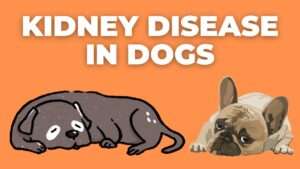

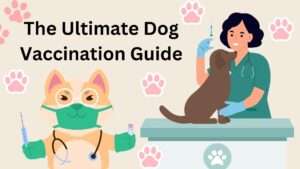



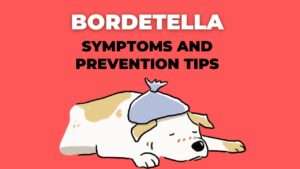









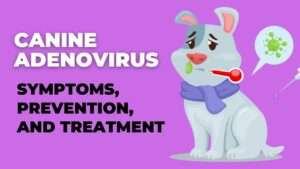
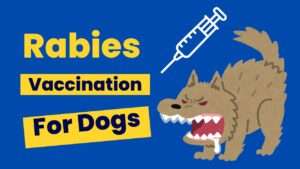





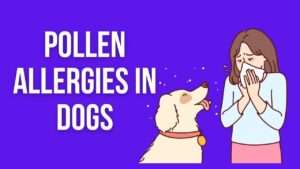
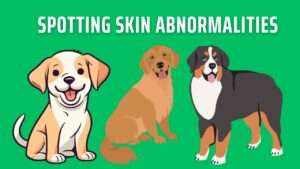







+ There are no comments
Add yours